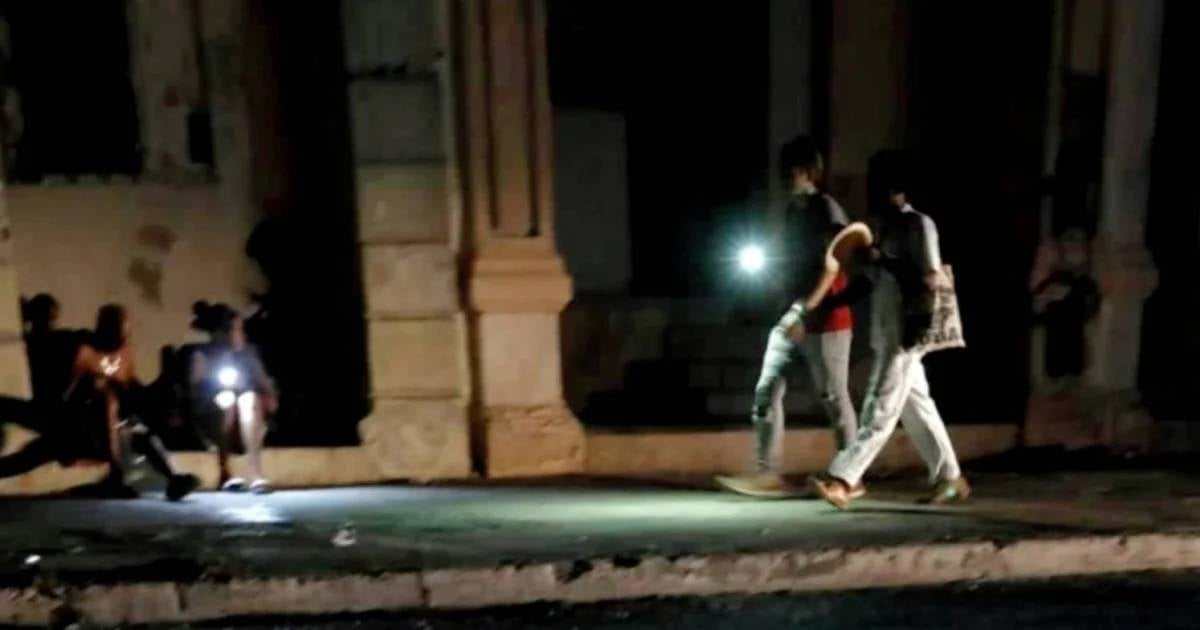On the evening of Saturday, June 29, a significant milestone was marked in Cuba's ongoing energy crisis, as vast areas of Havana experienced a complete blackout. Particularly affected was the Plaza de la Revolución municipality, where electricity was abruptly cut off at 6:00 p.m. Without hesitation. Meanwhile, only hotels and government buildings such as the Central Committee of the PCC, the MININT, and the MINFAR remained lit, highlighting the regime's priorities amidst widespread darkness. This was exposed by the Facebook page La Tijera, which shared images of Vedado shrouded in darkness.
Nationally, the peak impact reached 1,936 megawatts (MW) at 9:40 p.m., coinciding with the time of highest consumption, leaving millions of Cubans powerless at the worst possible moment. This figure represents the most severe deficit recorded so far in 2025 and one of the gravest since the energy crisis intensified in 2023.
The power outage lasted the entire 24 hours of Saturday and extended into the early hours of Sunday, further exacerbating the collapse of a system unable to provide even basic services. By 7:00 a.m. on Sunday, the generation capacity barely reached 1,625 MW against a national demand of 3,100 MW, resulting in a deficit of 1,467 MW, which was expected to worsen to 1,650 MW by midday, according to the Electric Union (UNE).
Technical Challenges and Resource Shortages
The technical situation is dire: four critical generating units are out of commission (Mariel, Nuevitas, and Felton), three others are undergoing indefinite maintenance, and thermal limitations are removing an additional 356 MW from the system. Furthermore, a lack of fuel has left 111 distributed generation plants offline (860 MW), and an absence of lubricants has immobilized 31 MW, totaling 891 MW lost due to resource shortages alone.
Insufficient Renewable Energy and Future Projections
Although the UNE plans to add 292 MW through minor units and recovered engines, Sunday's outlook remains disastrous: a projected deficit of 1,683 MW with the impact potentially reaching 1,753 MW during peak hours. The 18 solar photovoltaic parks, which generated a mere 1,775 MWh, are inadequate to mitigate a structural collapse rooted in thermal, financial, and management issues.
Cuba is not just in darkness; it is on the brink of a complete energy collapse, while a regime devoid of real solutions keeps its people in darkness, heat, and despair—one of the most challenging scenarios faced by the nation in decades.
Understanding Cuba's Energy Crisis
What caused the blackout in Havana?
The blackout in Havana was caused by a severe energy deficit, with demand far outstripping supply due to broken generators, maintenance issues, and fuel shortages.
How long did the blackout in Havana last?
The blackout lasted for 24 hours on Saturday and continued into the early hours of Sunday.
What is the role of renewable energy in Cuba's energy crisis?
Renewable energy, such as solar power, currently plays a minimal role in offsetting Cuba's energy crisis due to its limited capacity and the structural issues within the energy system.
